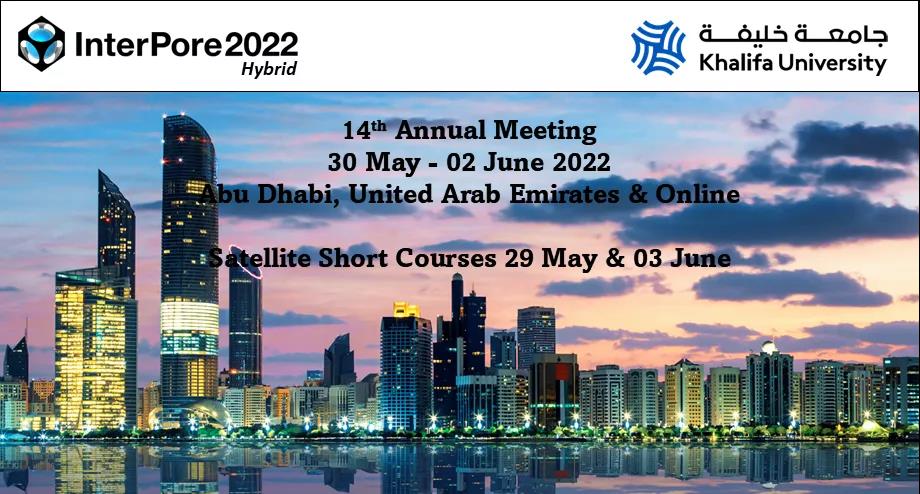Effect of confinement on the vapor-liquid-liquid three-phase equilibrium during CO2 utilization and sequestration in shale reservoirs
Abstract view|418|times PDF download|170|times
Abstract
With the rising global energy demand, shale gas and oil emerge as pivotal resources. Recent innovations utilizing CO2 as an injectant can effectively enhance shale oil and gas recovery and facilitate CO2 storage within shale reservoirs. However, low-temperature CO2 injection may result in the coexistence of three hydrocarbon phases, while the abundant nanopores in shale formations also notably influence the phase behavior of reservoir fluids. To optimize shale oil recovery and CO2 sequestration in shale formations, it is a prerequisite for precisely capturing the effect of confinement on the phase behavior of reservoir fluids within nanopores during CO2 injection. In this work, we introduce a novel three-phase vapor-liquid-liquid equilibrium calculation algorithm, which is designed to handle the unique phase behavior challenges presented by CO2 utilization and storage in shale reservoirs. To improve the robustness and efficiency, the proposed algorithm integrates a trust region-based stability test with a hybrid flash calculation algorithm that combines the Newton-Raphson and trust-region methods. Our thermodynamic model incorporates the capillarity effect and shifts in the critical points due to molecule-wall interactions, which are essential for accurate phase behavior simulation under confinement. Initial validations against experimental bulk phase data show promising results, and further investigations indicate that confinement alters three-phase vapor-liquid-liquid equilibria by suppressing two-phase and three-phase regions and shifting boundaries in the phase diagrams. The proposed algorithm not only advances our understanding of multiphase equilibrium in nanoporous media but also enhances the practicality of CO2 sequestration and improved oil recovery strategies in shale formations.
Document Type: Original article
Cited as: Chen, Z., Li, R., Du, Y., Ma, S., Zhang, X., Shi, J. Effect of confinement on the vapor-liquid-liquid three-phase equilibrium during CO2 utilization and sequestration in shale reservoirs. Advances in Geo-Energy Research, 2025, 16(3): 199-210. https://doi.org/10.46690/ager.2025.06.02
Keywords
Full Text:
PDFReferences
Andersen, P. Ø., Brattekås, B., Zhou, Y., et al. Carbon capture utilization and storage (CCUS) in tight gas and oil reservoirs. Journal of Natural Gas Science and Engineering, 2020, 81: 103458.
Bai, B., Elgmati, M., Zhang, H., et al. Rock characterization of Fayetteville shale gas plays. Fuel, 2013, 105: 645-652.
Chen, Z., Shi, J., Zhou, Y., et al. Efficient tracking of vapor-liquid-aqueous-equilibrium/liquid-liquid aqueous-equilibrium (VLAE/LLAE) phase boundaries. Chemical Engineering Science, 2024, 292: 119984.
Chen, Z., Xu, L., Zhou, Y., et al. A robust and efficient algorithm for vapor-liquid-equilibrium/liquid-liquid-equilibrium (VLE/LLE) phase boundary tracking. Chemical Engineering Science, 2023, 266: 118286.
Chen, Z., Zhou, Y., Li, H. A review of phase behavior mechanisms of CO2 EOR and storage in subsurface formations. Industrial & Engineering Chemistry Research, 2022, 61(29): 10298-10318.
Conn, A. R., Gould, N. I., Toint, P. L. Trust Region Methods. Englewood Cliffs, New Jersey, USA, SIAM Society for Industrial & Applied Mathematics, 2000.
Firoozabadi, A., Katz, D. L., Soroosh, H., et al. Surface tension of reservoir crude-oil/gas systems recognizing the asphalt in the heavy fraction. SPE Reservoir Engineering, 1988, 3(1): 265-272.
Haugen, K. B., Firoozabadi, A., Sun, L. Efficient and robust three-phase split computations. AIChE Journal, 2011, 57(9): 2555-2565.
Hirschfelder, J. O., Curtiss, C. F., Bird, R. B. The Molecular Theory of Gases and Liquids. New Jersey, USA, John Wiley & Sons, 1964.
Khan, S., Pope, G., Sepehrnoori, K. Fluid characterization of three-phase CO2/oil mixtures, Paper SPE 24130 Presented at the SPE/DOE Enhanced Oil Recovery Symposium, Tulsa, Oklahoma, 22-24 April, 1992.
Leverett, M. Capillary behavior in porous solids. Transactions of the AIME, 1941, 142(1): 152-169.
Li, H., Yang, D., Li, X. Determination of three-phase boundaries of solvent(s)-CO2-heavy oil systems under reservoir conditions. Energy & Fuels, 2013, 27(1): 145-153.
Li, Z., Firoozabadi, A. General strategy for stability testing and phase-split calculation in two and three phases. SPE Journal, 2012, 17(4): 1096-1107.
Liu, X., Zhang, D. A review of phase behavior simulation of hydrocarbons in confined space: Implications for shale oil and shale gas. Journal of Natural Gas Science and Engineering, 2019, 68: 102901.
Lu, C., Jin, Z., Li, H., et al. Simple and robust algorithm for multiphase equilibrium computations at temperature and volume specifications. SPE Journal, 2021, 26(4): 2397-2416.
Michelsen, M. L. The isothermal flash problem. Part I. Stability. Fluid Phase Equilibria, 1982a, 9(1): 1-19.
Michelsen, M. L. The isothermal flash problem. Part II. Phasesplit calculation. Fluid Phase Equilibria, 1982b, 9(1): 21-40.
Nocedal, J., Wright, S. Springer Series in Operations Research and Financial Engineering. New York, USA, Springer, 2006.
Pan, H., Connolly, M., Tchelepi, H. Multiphase equilibrium calculation framework for compositional simulation of CO2 injection in low-temperature reservoirs. Industrial & Engineering Chemistry Research, 2019, 58(5): 2052-2070.
Peng, D. Y., Robinson, D. B. A new two-constant equation of state. Industrial & Engineering Chemistry Fundamentals, 1976, 15(1): 59-64.
Petitfrere, M., Nichita, D. V. Robust and efficient trust-region based stability analysis and multiphase flash calculations. Fluid Phase Equilibria, 2014, 362: 51-68.
Petitfrere, M., Nichita, D. V. On a choice of independent variables in Newton iterations for multiphase flash calculations. Fluid Phase Equilibria, 2016, 427: 147-151.
Rachford Jr, H. H., Rice, J. Procedure for use of electronic digital computers in calculating flash vaporization hydrocarbon equilibrium. Journal of Petroleum Technology, 1952, 4(10): 19-13.
Robinson, D. B., Peng, D. Y., Chung, S. Y. The development of the Peng-Robinson equation and its application to phase equilibrium in a system containing methanol. Fluid Phase Equilibria, 1985, 24(1-2): 25-41.
Sherafati, M., Jessen, K. Stability analysis for multicomponent mixtures including capillary pressure. Fluid Phase Equilibria, 2017, 433: 56-66.
Song, Z., Li, Y., Song, Y., et al. A critical review of CO2 enhanced oil recovery in tight oil reservoirs of North America and China. Paper SPE 196548 Presented at the SPE/IATMI Asia Pacific Oil & Gas Conference and Exhibition, Bali, Indonesia, 29-31 October, 2019.
Sun, H., Li, H. Minimum miscibility pressure determination in confined nanopores considering pore size distribution of tight/shale formations. Fuel, 2021, 286: 119450.
Weinaug, C. F., Katz, D. L. Surface tensions of methane-propane mixtures. Industrial & Engineering Chemistry, 1943, 35(2): 239-246.
Wilson, G. M. A modified Redlich-Kwong equation of state, application to general physical data calculations. Paper 15C Presented at 65th National AIChE Meeting, Cleveland, Ohio, 15 May, 1969.
Xu, L., Li, S., Li, H. Hybrid multiphase flash calculation algorithm based on simultaneous solution of equilibrium ratios and phase fractions. Industrial & Engineering Chemistry Research, 2023, 62(22): 8981-8992.
Yang, G., Fan, Z., Li, X. Determination of confined fluid phase behavior using extended Peng-Robinson equation of state. Chemical Engineering Journal, 2019, 378: 122032.
Young, T. III. An essay on the cohesion of fluids. Philosophical Transactions of the Royal Society of London, 1805, 95: 65-87.
Zhang, K., Jia, N., Li, S., et al. Thermodynamic phase behaviour and miscibility of confined fluids in nanopores. Chemical Engineering Journal, 2018, 351: 1115-1128.
DOI: https://doi.org/10.46690/ager.2025.06.02
Refbacks
- There are currently no refbacks.
Copyright (c) 2025 The Author(s)

This work is licensed under a Creative Commons Attribution-NonCommercial-NoDerivatives 4.0 International License.


